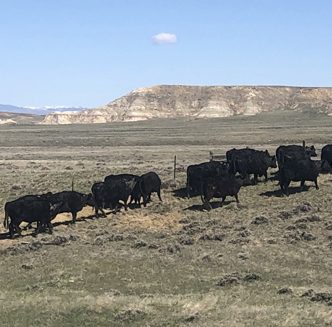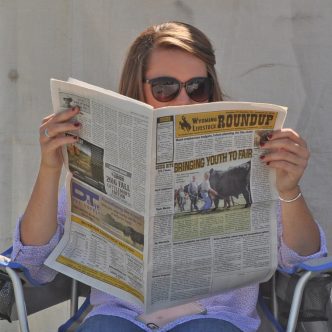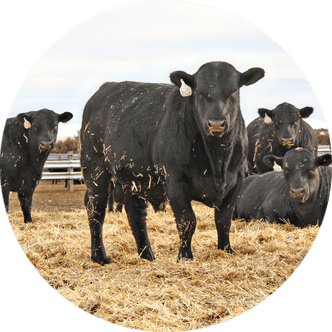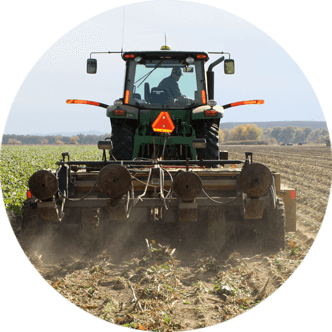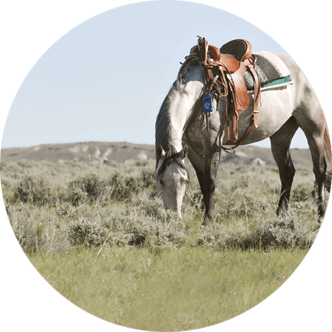Environmental Stewardship: Butler family recognized for commitment to conservation and community
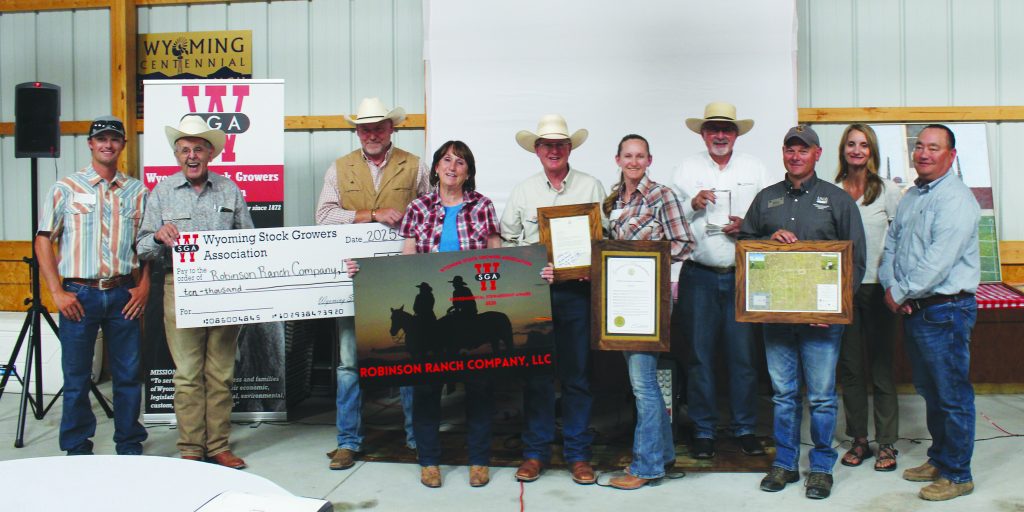
On June 25, the Wyoming Stock Growers Association (WSGA), in partnership with the Wyoming Department of Agriculture, awarded the 2025 Environmental Stewardship Award to the Jay Butler family of Douglas in recognition of their management of the Robinson Ranch LLC.
The award is presented annually to a Wyoming producer who incorporates outstanding environmental stewardship practices alongside productive ranch management.
WSGA members, government representatives, friends of the family and award sponsors including Audubon Rockies, Farm Credit Services of America, the Nature Conservancy, the Wyoming Game and Fish Department and the Wyoming Livestock Roundup were present at the tour to celebrate the achievement.
The day opened with a series of speeches followed by an awards ceremony and concluded with a tour of the ranch. The Butlers’ commitment to careful and thoughtful stewardship of the Robinson Ranch and surrounding ecosystem was apparent throughout both sessions.
Multi-generational tradition
“We’re particularly pleased to be here at the Robinson Ranch this year and to have seen the wonderful things they do,” began WSGA Executive Vice President Jim Magagna in his opening address.
“Every ranch has a fundamental commitment to doing the right thing, but the right thing varies widely from one place to another. Jay and his family have certainly identified what works on this ranch and are doing it very well,” he continued.
Magagna then passed the presentation to Jay Butler, who introduced his wife Linda and daughter Beth before providing an overview of the ranch’s heritage.
As Jay stated, the Robinson Ranch was established in 1916 by his great-grandfather Tom Robinson, Sr. who acquired the original ranch through the Homestead Act.
Originally from Nebraska, the Robinsons quickly realized the Wyoming terrain would not support corn farming as easily as the rolling plains they had come from. As a result, Tom Robinson, Sr. pivoted the operation to a sheep ranch, supplementing income with a well-drilling business.
Thus began a multi-generational tradition of thoughtful cultivation and careful conservation carried on by the Butlers today.
Dual legacy
The Robinson Ranch has expanded and shifted its focus from sheep to cattle since 1916 but the core values remain unchanged. WSGA President Reg Phillips highlighted the “two-legacy ranch” and effective management strategies as insurance for the continuation of the legacy of the land and the generational legacy.
“They fit the projects to the land, not the other way around,” noted Phillips. “They’re planning for the next generation to be here.”
An array of speakers provided testimony to Phillips’ comment, including former Natural Resources Conservation Service (NRCS) District Conservationist Tim Schroeder and Beth Butler.
As Schroeder recalled, the NRCS’s original involvement with the Robinson Ranch began in the late 1990’s with Jay Butler’s parents, Tom and Ella Robinson. Their first project involved sagebrush control and evolved to focus on water development and enhanced livestock grazing management as Jay and Linda took over operations.
Schroeder also commented upon the impacts of industry in Converse County, noting the implementation of transect monitoring as an example of proactive resource management that has helped the Butlers persevere through challenges presented by the boom of railroads, oil and gas development and wind farms.
Beth learned how to manage transects from Schroeder as a high school senior and continues to oversee the projects today. Despite living in Laramie, Beth is still instrumental to the Robinson Ranch’s operations and is especially involved with conservation efforts that helped her family earn the award. She has passed down the tradition to her children, who help her plot transects during visits to the ranch.
Stewarding land and community
“The term community stewardship has special meaning here,” Phillips said of the Robinson Ranch. “This family has the heart of educators and they do a lot to introduce people to the intricacies of ranching.”
“The work they do goes beyond environmental stewardship,” he continued. “It goes beyond ranching – it goes even beyond agriculture.”
An array of additional speakers highlighted the Butler family’s deep presence in Converse County, making specific note of Jay Butler’s long career as a science teacher in Douglas as well as his support of First Lady Jennie Gordon’s Wyoming Hunger Initiative, the Boys and Girls Club of Douglas and Wyoming Agriculture in the Classroom.
“It’s important to be good stewards of the land and good stewards of our communities, and to support our youth in the next generations moving forward,” Jay said.
Conservation in action
The day continued with a tour of the ranch. At each stop, Jay and Beth took turns pointing out areas of successful stewardship efforts throughout several pastures.
Projects include planting and watering cottonwood trees in riparian areas to restore watersheds, implementing wildlife ramps in stock tanks and directing water overflow from rubber tanks into reservoirs.
Their commitment to sustainability was also evidenced in ranching fixtures including tires from nearby coal mines recycled into tanks and spools from wind farm projects arranged into windbreaks for livestock.
Jay also highlighted a beekeeping project, noting the benefits of pollinators for several native plant species.
Beth discussed the positive impact transect projects have had upon the ranch’s rangeland management practices in greater detail, crediting transects as an effective way to monitor progress in the ongoing battle against cheatgrass.
Following the tour, the day concluded with a celebratory dinner back at the ranch headquarters.
Grace Skavdahl is the editor of the Wyoming Livestock Roundup. Send comments on this article to roundup@wylr.net.

